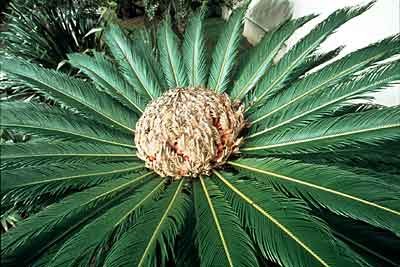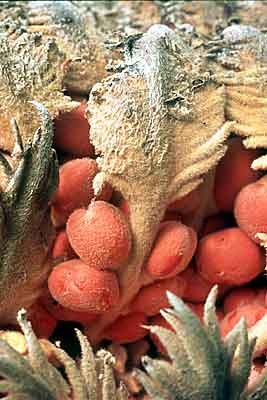Left leaflet: Group 1, several parallel veins in each leaflet
Middle leaf: Group 2, one midvein with with numerous side veins left and right (pinnate)
Right leaflet: Group 3, one unbranched vein in each leaflet.
(photo, John Braggins)
Please select root levels for the menu
NZ Plants
Cycads
(Phylum Cycadophyta) The cycads date back 250 million years. They have palm-like leaves, short, usually unbranched stems, massive cones and they are unisexual. There are 11 genera with 200 species found in tropical to semi-tropical areas around the world, often as fairly small populations. Their handsome palm-like foliage has made them very popular as ornamentals.
The three groups (families) of cycads.
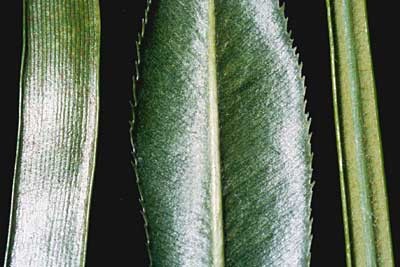
Group 1: Several parallel veins per leaflet (Family Zamiaceae)
This is the largest family of cycads, containing 8 genera and about 160 species

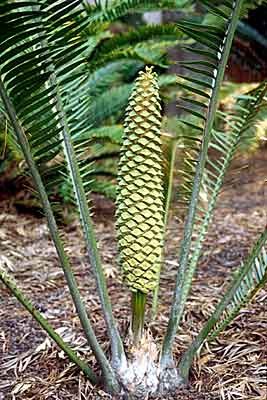
Group 2: One pinnately branching midvein per leaflet (Family Stangeriaceae)
This family contains the genera Stangeria (1 species) and Bowenia (3 species).
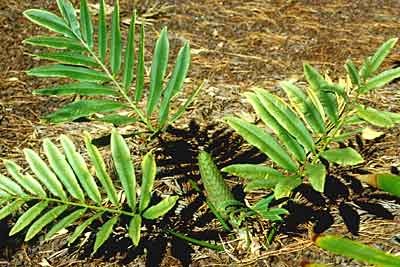
Stangeria eriopus - This is a small cycad with a subterranean stem. The leaves are pinnate and fern-like. This is a male plant with a pollen cone. Endemic to South Africa.
(photo, John Braggins)
Group 3: One nonbranching vein per leaflet (Family Cycadaceae)
This family contains the solitary genus Cycas with about 50 species, mostly in Australia and China.

